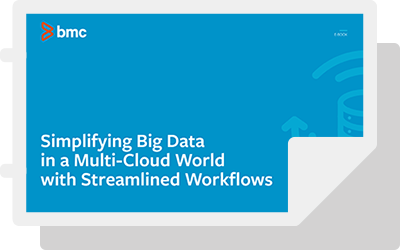Like many other concepts in the growing pool of resources called information technology, Data Lifecycle Management (DLM) is important to enterprise users but also somewhat abstract.
In a nutshell, DLM refers to a policy-driven approach that can be automated to take data through its useful life. But what exactly does this mean? Let’s use an example to illustrate.
Imagine that a piece of data is captured and entered into a database. The new data will either be accessed for reporting, analytics or some other use. Or, it will sit in the database and eventually become obsolete. The data may have logic and validations applied to it throughout either process. But at some point, it will come to the end of its useful life and be archived, purged, or both.
The concept of defining and organizing this process into repeatable steps for enterprise organizations is known as Data Life Cycle Management.
A Brief History of Data Lifecycle Management
The 1980s brought the introduction of random access storage (RAM) and with that enterprise businesses transitioned from sequential card-punch and tape approaches to databases. This era heralded the rise of data management to solve the issues of the time. The duplication of sensitive customer data, for instance, was a major cause for concern.
On a parallel path, information lifecycle management (ILM) was also born. In fact, ILM solved an even older problem than contemporary data management initiatives. That’s because ILM could be applied to all types of records from microfiche to film.
However, this definition of ILM became too broad for the digital resources of today. In fact, in 2004, it was decided by the Storage Networking Industry Association (SNIA) that ILM’s definition needed to be reevaluated. Now, ILM it refers to a policy, process and practice-driven approach to aligning the worth of business information with appropriate IT tools, systems and infrastructures for the useful life of a piece of data.
But what exactly does this mean and how is this process different from DLM?
DLM vs ILM
Think of DLM as the set of governing principles that defines and automates the stages of useful life, and determines prioritization. In more simple terms, data lifecycle management is the catalyst that pushes data from one stage to the next, from creation to deletion. It’s a system designed to answer the question: when should this information be deleted?
Information lifecycle management is even more nuanced. It seeks to answer: is this information relevant and accurate?
In a way, DLM and ILM are two sides of the same coin. But you can’t have an effective ILM strategy without implementing a strong system for data management or DLM.
DLM deals with entire files of data, while ILM is concerned with what’s in the file. ILM seeks to ensure every piece of datum included in a record is accurate and up-to-date for the useful life of the record. In the context of ILM, even metadata becomes particularly important.
DLM isn’t concerned with the individual pieces of data within a given record, just with the record itself. And a good DLM strategy will ensure that the most useful and most recent records are accessible with speed and ease. However, under the principles of DLM, as a record passes through defined lifecycle stages, it becomes more and more obsolete. As a result, speed and accessibility are no longer prioritized for stale data.
Both DLM and ILM should form critical aspects of an organization’s overall data protection strategy.
Benefits of DLM for Enterprises
There are a number of reasons why an enterprise corporation would want to implement DLM processes. These are as follows:
Compliance and Governance
Each industry sector has its own stipulations for data retention and implementing a sound DLM strategy helps businesses remain compliant.
Data Protection
In the grand scheme of data protection, DLM and ILM have their own role. A good DLM strategy offers redundancy that can ensure data stays safe in the event of an emergency. It also helps to ensure that customer data is safeguarded from being duplicated in different parts of a data infrastructure, where security may be a concern.
ILM Strategy
At the foundation of ILM is DLM. For enterprises to fully actualize an ILM strategy that keeps data current and secure, they must first have a working DLM strategy that pulls data through the lifecycle.
Efficiency
At the crux of every IT solution is greater efficiency. When DLM and ILM are properly implemented in tandem, useful data is clean, accurate and readily available to users. Automation helps drive this process. All of this helps businesses achieve greater agility and efficiency.
Data Lifecycle Management Stages and Best Practices
While there is no industry standard for enterprise data lifecycle management, most experts agree that the management cycle looks something like this:
Stage 1: Data Acquisition and Capture
Data acquisition and capture occurs at the beginning of the cycle when an enterprise organization obtains new, vetted information. This data could be in the form of an image, PDF file or Microsoft Word Document. The information is entered into some kind of data infrastructure and accessible to certain roles within a hierarchy on whatever devices offer an access point to the proprietary system.
At this stage, it’s important for data entry professionals to ensure that the information they receive is as accurate as possible.
Best Practice: Define your Data Types
One common data classification schema involves categorizing data as public, internal, sensitive or restricted. The purpose is to establish a set of guidelines for categorizing data that takes into account the sensitivity of the information as well its criticality and value to the organization.
Stage 2: Data Backup and Recovery
In the next stage, data that has been entered into the system undergoes some kind of archival process that ensures redundancy.
Active archives are an ideal storage method for organizations that tend to store large volumes of data and who need access to the information from time to time.
Best Practice: Implement a Robust Recovery Plan
Some would make Data Archival its own step in the process and they might put it toward the end of the life cycle. However, forward-thinking approaches that account for disaster recovery suggest a redundant, archived copy of records is required early and often.
Stage 3: Data Management and Maintenance
Data management and maintenance is the process by which accurate data is available in real time for use and publication.
At this stage, data usage ensures the record meets certain validations to be accessible for users with access to the infrastructure. When data is published, it’s made available to people outside of the system. Think about an invoice that uses customer data as a matter of record, as an example.
Another step that takes place under the management and maintenance umbrella is data synthesis. Data synthesis occurs when inductive logic, like a judgment or opinion, is applied to data validation.
Best Practice: Create a Comprehensive Data Management Policy
This should be shared throughout the enterprise organization so that all stakeholders can begin implementing the processes in a timely manner. You might even consider appointing a “DLM Champion” from the IT Department who can help field any questions regarding the new policy.
Stage 4: Data Retention or Destruction
In the final stage of the life cycle, data is retained or destroyed.
The classification of the data as outlined above will mandate its disposal method.
However, before destroying any data, it is critical to confirm whether there are any policies in place that would require you to retain the data for a certain period of time.
Best Practice: Create a Compliance Policy
Coming up with the right timeline for this cycle means understanding state and federal regulations, industry standards and governance policies. In other words, it can take some research. IT stakeholders are urged to revisit the guidelines for destroying data every 12-18 months to ensure compliance, since rules change often. This framework should be included as part of your overall data management policy.
Unfortunately, there is no grand consensus on DLM. It’s something that is individual to each organization and industry. However, as the market sector for enterprise data grows, leaders in data technology are working to standardize DLM.
Final Thoughts
At the beginning of this article, we set out to show you strategies for establishing your organization’s data lifecycle management. It’s true that the process is not one-size-fits-all. And as a result, it can seem abstract.
But, at the end of the day, there are a few important takeaways about DLM:
- It’s separate from ILM, though both are necessary and valuable
- Four recommended stages for DLM include: 1) Data acquisition and capture; 2) Data backup and recovery; 3) Data management and maintenance; 4) Data retention and secure destruction
For businesses looking to increase agility and efficiency, having a sound DLM strategy is a non-negotiable. Furthermore, DLM is an important investment in developing a risk management approach that ensures your organization remains compliant at all times.






